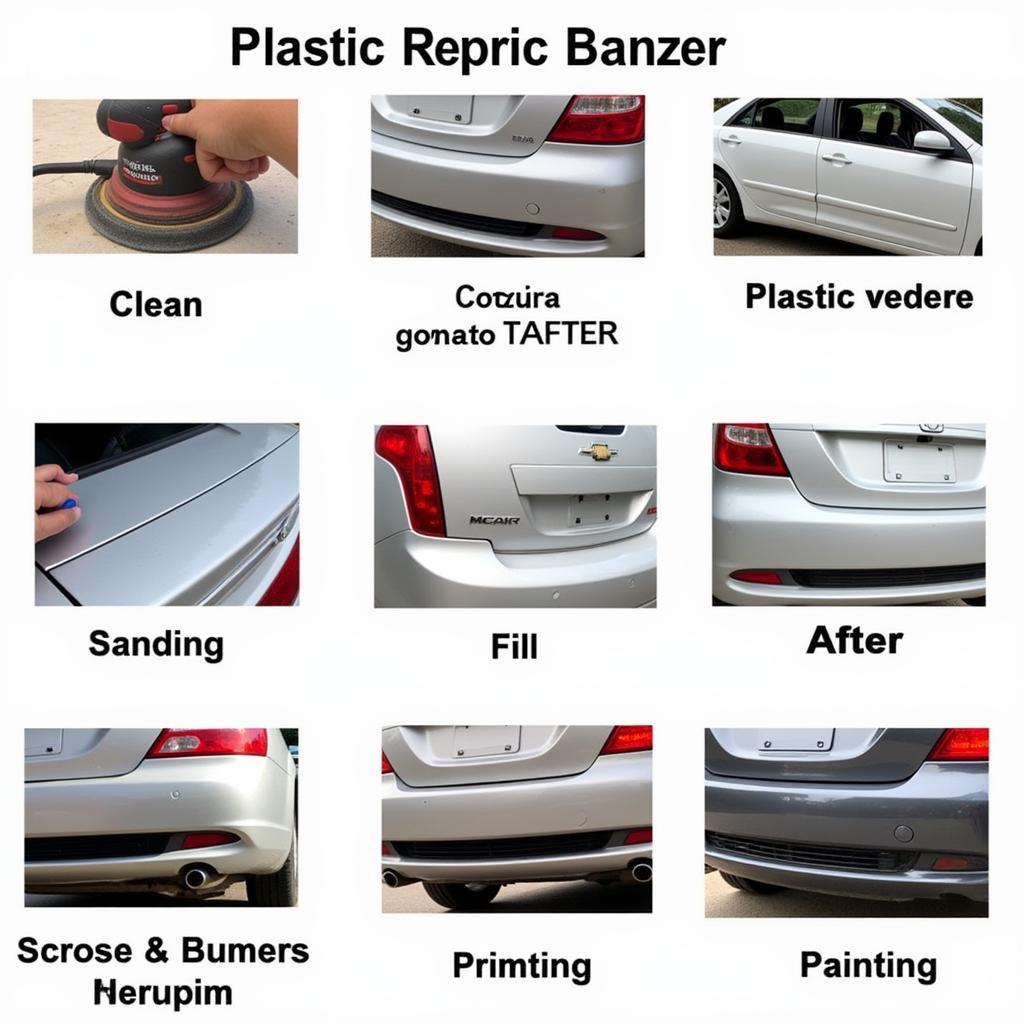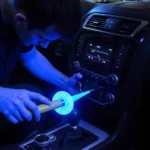Plastic car bumpers are designed to absorb impact in minor collisions, protecting your car from more serious damage. Unfortunately, this also means they’re prone to scratches, dents, and cracks. But can plastic car bumpers be repaired? The answer, in most cases, is a resounding yes.
Repairing a plastic bumper is often a more cost-effective and environmentally friendly solution than replacing it entirely. Understanding the different repair options available can save you money and get your car looking its best again. From minor scuffs to more significant cracks, various techniques can restore your bumper’s appearance and functionality. This article will explore the various methods used to repair plastic car bumpers, helping you determine the best course of action for your specific situation. Find out if a DIY approach is feasible or if professional help is required. You’ll learn how to assess the damage, choose the right repair method, and even prevent future bumper damage. For car bumper repair in Bury, check out this service.
Understanding Plastic Bumper Damage
Before diving into repair options, it’s essential to understand the type of damage your bumper has sustained. Different types of damage require different repair approaches. A simple scuff might only need a light sanding and buffing, while a deep crack could require plastic welding and repainting. Accurately assessing the damage will help you choose the most appropriate and effective repair method.
Types of Bumper Damage
- Scratches: These are superficial marks on the bumper’s surface and are often the easiest to repair.
- Scuffs: Deeper than scratches, scuffs involve the removal of paint and some of the plastic material.
- Dents: These are depressions in the bumper caused by impacts. Small dents might be repairable without filler, while larger ones might require more extensive work.
- Cracks: These are breaks in the plastic, often caused by more significant impacts. Crack repair can be more complex and may require specialized tools and techniques.
Knowing the extent of the damage is the first step in determining whether a DIY repair is feasible or if you need the expertise of a car bumper repair specialist in Buckinghamshire.
DIY Bumper Repair Options
For minor scratches, scuffs, and dents, DIY repairs are often possible. Numerous repair kits are available online and in auto parts stores, containing everything you need to fix minor bumper damage. These kits typically include fillers, sanding tools, and paint to match your car’s color. However, remember that DIY repairs require patience and attention to detail.
Steps for a DIY Bumper Repair
- Clean the area: Thoroughly clean the damaged area with soap and water, then dry it completely.
- Sand the damaged area: Use sandpaper to smooth out any rough edges or raised plastic.
- Apply filler (if needed): For dents or deeper scuffs, apply plastic filler and allow it to dry.
- Sand the filler: Smooth the filler until it’s flush with the surrounding bumper.
- Prime the area: Apply primer to ensure proper paint adhesion.
- Paint the repaired area: Use touch-up paint that matches your car’s color.
- Apply clear coat (optional): A clear coat can protect the paint and give it a glossy finish.
If you are unsure about handling the repair yourself, especially if the damage is extensive, it’s best to seek professional assistance. You can find reliable car bumper repair near me in Tempe.
Professional Bumper Repair
For more significant damage, such as large cracks or deep dents, professional repair is usually recommended. Professionals have the expertise and specialized equipment to handle complex repairs, including plastic welding and advanced painting techniques. They can restore your bumper to its original condition, ensuring a seamless and durable repair.
When to Seek Professional Help
- Large cracks: Cracks that extend across a significant portion of the bumper often require professional repair.
- Deep dents: Dents that cannot be easily repaired with filler should be addressed by a professional.
- Damage to underlying components: If the damage extends beyond the bumper itself, professional repair is essential.
“Repairing a plastic bumper correctly requires not just the right tools, but also a keen understanding of the plastic’s properties. DIY repairs can sometimes worsen the damage if not done properly,” says John Miller, Automotive Repair Specialist at Miller’s Auto Body.
 Professional Plastic Bumper Repair Process
Professional Plastic Bumper Repair Process
Preventing Future Bumper Damage
While some bumper damage is unavoidable, there are steps you can take to minimize the risk:
- Park carefully: Avoid parking too close to other vehicles or objects.
- Be mindful of curbs: Be careful when parking near curbs to prevent scraping your bumper.
- Install bumper guards: Consider installing bumper guards for added protection.
- Drive defensively: Maintain a safe following distance and be aware of your surroundings.
Conclusion
So, can plastic car bumpers be repaired? Absolutely. From minor scratches to significant cracks, there are various repair options available. Whether you choose a DIY approach or seek professional help, understanding the extent of the damage and the appropriate repair method is key to restoring your bumper’s appearance and functionality. For further information on how to repair a dent in a car bumper, refer to this guide. Alternatively, if you’re looking for step-by-step instructions on how do you repair plastic car bumpers, this article provides a detailed walkthrough. Protecting your investment and keeping your car looking its best requires proactive measures and informed decisions.
FAQ
- What is the average cost of a professional bumper repair? The cost varies depending on the extent of the damage and the location.
- Can I repair a cracked bumper myself? While possible for small cracks, larger cracks require professional expertise.
- What type of paint should I use for a DIY bumper repair? Use touch-up paint specifically designed for your car’s make and model.
- How long does a professional bumper repair take? Depending on the complexity, it can take from a few hours to a couple of days.
- Are there any eco-friendly bumper repair options? Yes, some repair shops specialize in eco-friendly methods and materials.
- Will a repaired bumper be as strong as a new one? With professional repair, the bumper’s structural integrity can often be restored.
- How can I prevent future bumper damage? Careful parking, bumper guards, and defensive driving can help minimize the risk.
Common Bumper Repair Scenarios
- Scenario 1: Minor scratches and scuffs can often be addressed with a DIY repair kit.
- Scenario 2: Dents might require filling and sanding, either DIY or professionally.
- Scenario 3: Cracks necessitate professional repair, possibly involving plastic welding.
Related Resources
- Check out our article on car maintenance tips.
- Learn more about car paint repair options.
If you need further assistance, please contact us via WhatsApp: +1(641)206-8880, or email us at [email protected]. Our customer service team is available 24/7.

